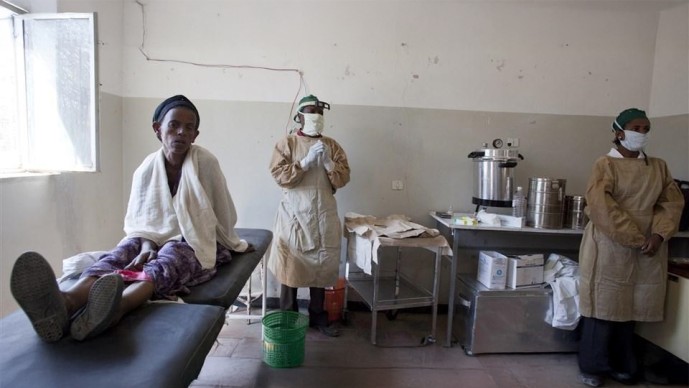Let's Take the "Neglect" out of Neglected Tropical Diseases
- Julie Jacobson, Sandra Laney, May 3, 2013

Six months ago, Grand Challenges Explorations first asked for your great ideas on how to tackle some of the biggest problems related to neglected tropical diseases (NTDs) in developing countries. You sent us a lot of great concepts, and we're happy to announce that we'll soon publicize funding for a number of your proposals.
In March, we issued a second call for proposals under GCE Round 11 focused on identifying new approaches to the detection, treatment and control of a specific set of NTDs. Specifically, we want your help is discovering better ways to identify and reduce the burden of onchocerciasis, lymphatic filariasis (LF), soil transmitted helminths (STH), and schistosomiasis.
We invited you to read our call for proposals on Selected Neglected Tropical Diseases closely because we've changed the scope of our original solicitation from six months ago to include one new disease and a focus on the discovery of new diagnostics. We have also updated the scope of our drug discovery efforts. We worked closely with partners to prepare a challenge that we hope will drive innovation where it is most needed and can have the strongest impact on reducing NTDs.
Integrated Approaches to Surveillance and Treatment
To best utilize limited resources, we're seeking new ideas to integrate the work that currently goes into beating these diseases. Since many NTDs are treated via mass drug administration (MDA) campaigns - where whole populations are treated regardless of infection - more efficient strategies that combine mapping, monitoring, and surveillance efforts for one or more neglected diseases while distributing drugs for another disease could save precious time, effort, and money and stretch the impact of every dollar invested.
Better Macrofilaricides for Onchocerciasis and LF
In this current GCE round , we continue our quest for a macrofilaricide, a drug to kill adult worms in onchocerciasis and lymphatic filariasis (LF) , but we recognize that several obstacles stand directly in the path of this important objective.
- First, time is of the essence. To have the biggest impact, we need a macrofilaricide in the field a few years from today, not the decades it typically takes in the drug development pipeline. That's why we are only seeking ideas that use validated drug targets or ideas for repurposing already-approved drugs.
- Second, our current methods to test macrofilaricide candidates are limited. We need a small, cheap, easy, and more relevant way to screen macrofilaricide candidates.
- Third, as we described in our previous blog post, while we're waiting on this macrofilaricide to come along, we remain in the trenches, treating diseases via MDA campaigns to kill larval worms.
Better Diagnostics for Loa Loa
Unfortunately, in areas where individuals are infected with a high burden Loa Loa, a parasitic eye worm, severe side effects can result from standard MDA treatments for onchocerciasis or lymphatic filariasis. To avoid these side effects, entire populations and geographies cannot be treated with standard MDA for onchocerciasis. To reach communities into these areas and treat everyone who can benefit from treatment, we need a rapid, point-of-care, semi-quantitative diagnostics for Loa Loa infections so we can safely screen for Loa Loa and treat for onchocerciasis in co-endemic areas.
Seeking: One Big Idea on Two Pages or Less!
So what do we need from you? It's simple. Send us one great idea on two pages or less on how you would tackle one of the challenges outlined above. We'll provide you $100K and an opportunity to prove your concept!
Send us your great ideas today and together let's take the "neglect" out of NTDs!
For background on the previous Round of this topic, please see the Round 10 topic description and Ken Duncan's blog post describing the topic in more detail.